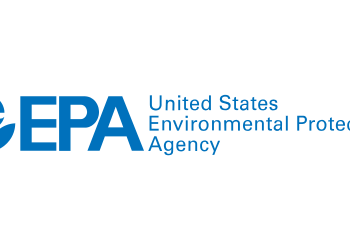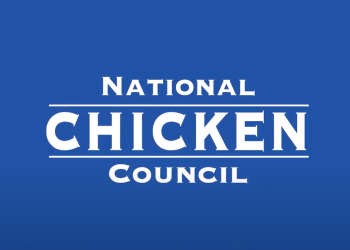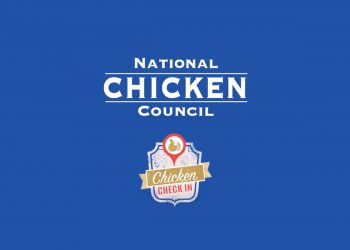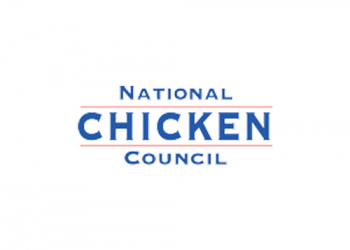As chicken producers, we play an important role: supplying the world with a safe, planet-friendly, and nutrient-dense source of high-quality protein. In fact, over the past decade, we have expanded chicken production dramatically to meet growing demand, all while using fewer environmental resources and driving down prices consumers pay for chicken. According to the USDA, Americans on average will eat a record 96.8 pounds of chicken per person this year. Chicken consumption is nearly twice that of beef and pork.
And that’s a great thing for consumers because that means more access to the health benefits that come from eating chicken. Chicken is not only delicious, but also so nutritious that it contains all 9 essential amino acids, or the building blocks of protein, needed in the human diet. As an excellent low-calorie, low-sodium, and low-fat source of protein, chicken provides important nutrients throughout our lives—from pregnancy through our later years.
Recent research even suggests consumers are eating chicken more often (88% of consumers say they eat chicken more than once a week) because it is a healthy choice, versatile, and provides the best value for price. It remains “center of the plate” as a top protein choice for 1 in 2 consumers and 85% report that they will consume more or the same amount of fresh chicken at home over the next 6-12 months.
According to the 2020-2025 Dietary Guidelines for Americans, chicken is a nutrient-dense, lean protein food that can be included in a healthy eating pattern for people of all ages. When chicken is on the plate, it also helps Americans customize and enjoy meals that reflect their personal preferences, cultural traditions, and budgetary considerations.
A few key health benefits of eating chicken include:
- Providing vitamins and minerals involved in brain function
- Building muscle
- Promoting heart health
- Strengthening bones
- Aiding in weight loss
If that’s not enough, here are 6 additional nutritional benefits you may not realize about chicken:
- Chicken is an important nutrient-dense food in pregnancy, and as a first food for infants and toddlers (0-2 years old): Choline is a nutrient that pregnant or lactating women don’t get enough of, but is critical for a child’s normal brain development – and chicken has it! Chicken is a source of critical nutrients for infants and toddlers as they grow and develop, including iron, zinc, protein, choline, and long chain polyunsaturated fatty acids, making it a great first food.
- Dark meat chicken typically contains more vitamins (e.g., riboflavin, thiamin, and vitamins B6 and B12) and minerals (e.g., iron and zinc) than white meat cuts: Dark meat also contains more flavor and is less likely to dry out or become overly chewy during the cooking process due to its juicy, tender texture.
- Getting enough protein in your meals, including from chicken, can help you manage blood sugar: The American Diabetes Association recommends filling ¼ of your plate with lean protein like chicken.
- Chicken delivers vital, under-consumed nutrients of public health importance for all age groups: Including potassium, vitamin D, iron, and calcium (all provided at various amounts by one 3.5 oz. serving of boneless, skinless chicken breast).
- The available research suggests that as you eat more poultry, like chicken, your risk of certain cancers goes down: The same seems true for the relationship between eating poultry, and lower risk of heart disease and diabetes.
- Chicken and poultry meat can be a component of any overall healthy eating pattern: This according to a new scoping review paper from researchers at Purdue University after analyzing 540 studies (1) on everything from how poultry affects body composition in adults, to how eating chicken can impact risk factors for cancer and diabetes. Chicken lends itself to any eating pattern (from the Mediterranean diet, to the DASH diet, to flexitarian), any flavor, offers the best value for cost, and can be used in recipes with other nourishing ingredients.
Additional reading on the health benefits of chicken:
- 5 Nutritional Benefits You Didn’t Realize About Chicken
- During National Nutrition Month & Beyond – Chicken Hits the Spot!
- 3 Ways Your Favorite Protein Helps Your Health, According to a Dietitian!
Put simply, there are many reasons why consumers should always choose chicken for their health. Chicken has more than 10 essential nutrients that benefit the health of eaters of all ages. Check out the table below to see the nutritional value of chicken!
Values for Cooked (Roasted) Product*
| Nutrient | Skinless, boneless breast | Skinless, boneless dark meat | Drumstick, skinless | Drumstick, skin-on | Thigh, skinless | Thigh, skin-on | Wing, skinless | Wing, skin-on | Whole Chicken, meat only | Whole Chicken, meat and skin |
|---|---|---|---|---|---|---|---|---|---|---|
| Calories | 165 | 205 | 174 | 191 | 179 | 232 | 203 | 254 | 190 | 239 |
| Protein (grams) | 31.02 | 27.37 | 24.22 | 23.35 | 24.76 | 23.26 | 30.46 | 23.79 | 28.93 | 27.3 |
| Total fat (grams) | 3.57 | 9.73 | 7.8 | 10.15 | 8.15 | 14.71 | 8.13 | 16.87 | 7.41 | 13.6 |
| Saturated fat (grams) | 1.01 | 2.66 | 2.108 | 2.74 | 2.311 | 4.111 | 2.26 | 4.976 | 2.04 | 3.79 |
| Monounsaturated fat (grams) | 1.24 | 3.56 | 3.052 | 4.155 | 3.361 | 6.257 | 2.61 | 7.706 | 2.66 | 5.34 |
| Polyunsaturated fat (grams) | 0.77 | 2.26 | 1.605 | 2.083 | 1.695 | 2.993 | 1.78 | 3.59 | 1.69 | 2.97 |
| Cholesterol (milligrams) | 85 | 93 | 128 | 130 | 133 | 133 | 85 | 141 | 89 | 88 |
| Sodium (milligrams) | 74 | 93 | 99 | 123 | 106 | 102 | 92 | 98 | 86 | 82 |
| Vitamin D (micrograms) | 0.1 | 0.1 | 0.1 | 0.1 | 0.2 | 0.2 | 0.1 | 0.2 | 0.1 | 0 |
| Calcium (milligrams) | 15 | 15 | 12 | 11 | 9 | 9 | 16 | 18 | 15 | 15 |
| Iron (milligrams) | 1.04 | 1.33 | 1.08 | 1.11 | 1.13 | 1.08 | 1.16 | 0.84 | 1.21 | 1.26 |
| Potassium (milligrams) | 256 | 240 | 269 | 247 | 269 | 253 | 210 | 212 | 243 | 223 |
| Vitamin B2 [Riboflavin] (milligrams) | 0.114 | 0.227 | 0.189 | 0.203 | 0.218 | 0.19 | 0.129 | 0.153 | 0.178 | 0.168 |
| Vitamin B3 [Niacin] (milligrams) | 13.712 | 6.548 | 6.053 | 5.403 | 6.208 | 5.789 | 7.312 | 6.32 | 9.173 | 8.487 |
| Vitamin B5 [Pantothenic Acid] (milligrams) | 0.965 | 1.21 | 1.209 | 1.077 | 1.3 | 1.227 | 0.999 | 0.86 | 1.104 | 1.03 |
| Vitamin B6 (milligrams) | 0.6 | 0.36 | 0.425 | 0.383 | 0.462 | 0.414 | 0.59 | 0.558 | 0.47 | 0.4 |
| Vitamin B12 (micrograms) | 0.34 | 0.32 | 0.39 | 0.39 | 0.42 | 0.44 | 0.34 | 0.35 | 0.33 | 0.3 |
| Phosphorus (milligrams) | 228 | 179 | 205 | 195 | 230 | 216 | 166 | 147 | 195 | 182 |
| Magnesium (milligrams) | 29 | 23 | 24 | 22 | 24 | 22 | 21 | 19 | 25 | 23 |
| Zinc (milligrams) | 1 | 2.8 | 2.11 | 2.36 | 1.92 | 1.73 | 2.14 | 1.64 | 2.1 | 1.94 |
| Selenium (micrograms) | 27.6 | 18 | 25.2 | 26.9 | 27.1 | 25.3 | 24.7 | 25.5 | 22 | 23.9 |
| Choline (milligrams) | 85 | 74 | 63.4 | 67.8 | 71.8 | 67.6 | 79.6 | 111.3 | 78.8 | 65.9 |
The White House Conference on Hunger, Nutrition, and Health
The first and only other White House Conference (WHC) on Hunger, Nutrition, and Health was held more than 50 years ago in 1969 and changed the country’s food policy agenda, fostering widespread improvements to and the expansion of various federal nutrition programs.
Half a century later, the 2022 White House Conference brought together stakeholders in September to develop recommendations that pave the way for solutions on hunger, nutrition, and health.
At the National Chicken Council (NCC), we believe every American deserves increased access to safe, wholesome, planet-friendly and nutritious foods like chicken. We also believe that to end hunger and reduce diet-related diseases in the U.S., chicken must be part of the solution.
Specifically, chicken is environmentally sustainable and provides high-quality, bioavailable nutrients that can help close nourishment gaps in food and nutrient-insecure populations. Nutrients like protein and essential vitamins and minerals like iron, zinc, choline, and vitamin B12 are found in many different cuts of chicken.
To that end, the NCC has submitted recommendations to the organizers of the WHC on Hunger, Nutrition, and Health aimed at addressing pillar one—Improve Food Access and Affordability— to expand access to and ensure availability of chicken as a nutrient-dense, high-quality protein source:
- Renew the Farmers to Families Food Box Program.
The U.S. Department of Agriculture (USDA) Farmers to Families Food Box Program was responsible for helping many American families keep food on the table through the pandemic, all while supporting local agriculture. The USDA provided excess chicken supply to people in need, which not only helped support demand, but also created more job opportunities for local workers and led to additional flocks for local farmers. The NCC encourages USDA to renew this program or a similar one
- Expand Section 32 purchases.
Section 32 purchases provide another way for the USDA to secure affordable, nutritious protein for those who need it most. The NCC encourages the USDA to identify ways to expand Section 32 purchases, both in terms of the volume and type of chicken procured through the program. The NCC also encourages the USDA to evaluate program requirements and purchase specifications to make it easier to participate in the program.
- Expand cold storage capacity and the nation’s long-haul trucking fleet.
Cold storage facilities and overland trucking are essential sectors that support numerous industries. They also have relatively modest overhead costs and lower barriers to entry. Investing in these important supporting sectors would benefit a broad range of industries, amplifying the effect of any federal dollars invested. Most food banks and charities have limited cold storage, and only 6 in the country have the USDA-inspected “cold clean rooms” required to receive and package meat donations.
- Increase safe storage, packing and distribution infrastructure.
This will enable food charities to provide more poultry to families in need.
Read the full letter submitted by the NCC to the WHC on Hunger, Nutrition, and Health organizers here.
Furthermore, the NCC encouraged the WHC on Hunger, Nutrition, and Health organizers to read our U.S. Broiler Chicken Industry Sustainability Report, noting the following key takeaways in particular:
- Air, land and water: New Life Cycle Assessment shows substantial progress across all key impact categories; pages 13-14
- Food and consumer safety: The prevalence of salmonella In raw chicken Is at all-time lows; page 36
- Community support: Chicken companies all around the country give back-to their local communities by making donations to food banks, soup kitchens and more;. pages 49-55
- Food security – Providing Americans and people around the world with affordable, nutritious protein; page 56
- Campbell W, et al. Nutritional composition, dietary intakes and human health effects of chicken meat. Purdue University, Department of Nutrition Science; Contract #41000690. August 3, 2021. This is a National Chicken Council internal report. Publication is currently under preparation. National Chicken Council provided funding support for this study. National Chicken Council personnel were not involved in discussions of design, conduct, analysis, or reporting of the scoping or narrative review.











